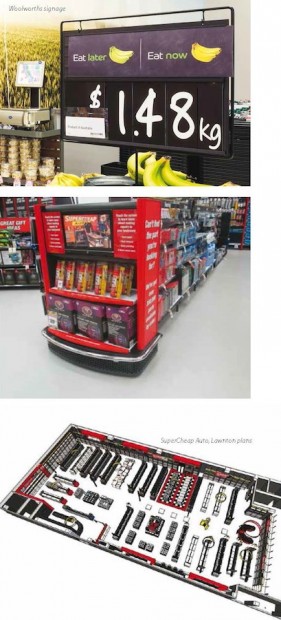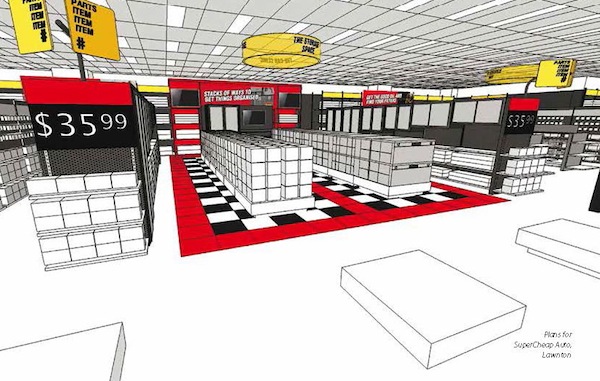 Everybody loves bananas. But there are differing opinions on exactly how ripe a banana should be.
Everybody loves bananas. But there are differing opinions on exactly how ripe a banana should be.
The general preference is for firm and yellow, while a few of us enjoy them browner and softer. Very few people prefer green ones.
With this in mind, Woolworths recently briefed McCartney Design to come up with a sign to remind customers that you can buy yellow bananas to eat now, but you can also buy green ones to ripen at home and eat later.
It might seem blindingly obvious, but that reminder effectively removes the barrier to buying green bananas and is a benefit to the customer, who isn’t stuck with
overripe bananas at the end of the week, and to the retailer, who sells more bananas.
Sometimes selling is just about taking away the barriers to purchase. There are plenty of reasons not to buy something. Even if it’s the right merchandise at the right price, sometimes it’s just too hard.
Having to wait is one barrier – either at the cash counter or for a dressing room.
With cost of labour being what it is in Australia, queues are inevitable, but by allowing enough space around queue lines and creating distractions, such as impulse merchandise or even self service checkouts where the customer is in control of how long it takes, this obstacle can be overcome.
Being uncomfortable is another. Cramped, badly lit dressing rooms provide a significant barrier to purchase, which can be easily removed by some attention to detail in their design.
 Not knowing enough about the product can be daunting to customers. Providing just enough information in the right place will give the customer added confidence in purchasing the item or in asking the right questions about it.
Not knowing enough about the product can be daunting to customers. Providing just enough information in the right place will give the customer added confidence in purchasing the item or in asking the right questions about it.
Sometimes the barrier to purchase can be as simple as the customer not being able to find what they’re looking for. A combination of good signage and store layout will remove this barrier.
All of these barriers can be removed by careful consideration of instore communications and overall store design.
In our store design for SuperCheap Auto’s new flagship at Lawnton, Queensland we asked ourselves what the barriers were and went about removing them.
SuperCheap Auto is shopped mainly by men. One of the main barriers to purchase for men is trying to find the item in the first place – because (fundamental fact about male shoppers) they won’t ask.
Working with the SuperCheap team, we developed a customer friendly store plan based around a simple central aisle, placing merchandise according to shopping occasions rather than product categories.
We also developed a simple but fail safe signage system to get the customers to where they need to be. Supercheap’s customers are interested in doing projects – each customer has one or more projects in mind when they enter the store. By using interactive video screens on gondola ends to show the customer how to do popular projects, SuperCheap removes the barrier of the unknown.
SuperCheap then adds the shopping list so that the customer knows that they have everything they need for the job. Another barrier gone.
Yet more barriers fall at the end of the shopping experience. There’s the price guarantee prominently displayed at the counter. If fitting the part is too hard, there is a reminder that they can fit it for you.
There is a reminder that you can shop online if getting to the store is too hard, and details of the SuperCheap diagnostic service, which diagnoses your car’s fault, gets you the best deal on the part you need, plus an estimate of how long it should take a professional to fit it.
You can’t afford not to use it, really.
The final barrier to purchase might be the problem of getting the item home.
Poco, Steinhoff’s new entry to the Australian budget furniture market in Blacktown, Sydney, eliminates this barrier by parking complimentary self drive delivery vans at the store’s entrance. Simple but effective – there’s no reason not to buy that sofa!
It’s often useful to brainstorm reasons why customers wouldn’t buy your products, then think about how to eliminate the barriers to purchase.
The answers can be a mix of instore signage and communications, store planning, integration of online services, or just simple ideas that solve everyday problems.
The integration of these ideas is the key to good retail design.
Gary McCartney is the owner of McCartney Design, an integrated design studio. More information can be found at www. mccartneydesign.com.au.







